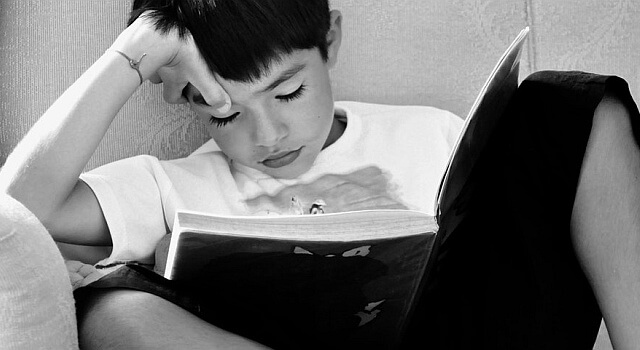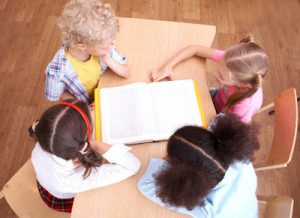Not sure why your child struggling in school? They may have a vision problem.
According to the American Optometric Association, 60% of the brain is dedicated to some function related to receiving, deciphering or interpreting visual information.
This means that our sense of sight is by far the leading method of gathering information and learning about the world around us.
It’s no wonder then, that children who have vision problems are likely to have difficulties learning in school.
Fortunately, when diagnosed and treated early, the negative effects of these conditions on your child’s learning can be minimized or prevented altogether.
Vision problems and learning difficulties
In order for your child to have the proper vision for learning, their brain and eyes need to be able to work together efficiently and accurately.
There are three broad categories of vision-related learning disorders:
1. Refractive problems
These are the issues parents most commonly think of when they consider whether their child’s learning difficulties are related to vision.
Refractive problems include:
These conditions affect a child’s ability to see clearly up close or at a distance.
A child with refractive error may have trouble seeing the board at the front of the classroom, or experience blurry vision when reading up-close.
2. Functional vision problems
Functional vision refers to the visual skills required for the eyes to work together to form a three-dimensional picture, keep images in focus as they come closer or move further away, track moving objects and more.
Difficulties with visual skills cause symptoms such as blurred vision, headaches and eye strain, and can cause discomfort during reading and writing activities.
3. Visual perception problems
Visual perceptual abilities describe the brain’s ability to interpret the signals sent to it by the eyes.
A child that has difficulty with visual perception may have problems with comprehension, visual memory, spelling, reading fluency or processing visual information.
SEE RELATED: Vision and Learning Difficulties
If your child experiences any of the signs below, they may be suffering from vision issues impacting their ability to learn— see your local eye doctor.
Signs of vision problems
If your child is having learning difficulties, there’s a wide range of symptoms that suggest that their issues may be rooted in a vision problem.
Common signs of vision-related learning issues:
- Holding books very close to the face while reading
- Tilting of the head or closing one eye while attempting to read
- Shorter attention span or losing their place while reading texts
- Falling behind socially or academically compared to the rest of their class
- Eye strain with headaches
- Problems with development of eye-hand coordination
- Blurry or double vision
- Crossed eyes or eyes that don’t move in unison
- Avoidance of close work and reading
- Difficulties retaining things that they read
- Reading slowly while using a finger
- Rubbing the eyes often and blinking excessively
School vision screening or comprehensive eye exam?
The first step to diagnosing vision issues that may be affecting your child’s ability to learn is to schedule a comprehensive eye exam.
This is true even if your child has 20/20 vision as determined by a school vision screening.
School vision screenings are not equipped to diagnose functional eye and visual perception disorders, and can only catch the most obvious cases of refractive error. These screenings would not be able to catch the vast majority of conditions that would impact a child’s learning.
During your child’s comprehensive eye exam, your optometrist will run an extensive battery of tests to check basic vision skills such as eye teaming, convergence and divergence, eye tracking and accommodation. They will also check your child’s eyes for signs of disease such as glaucoma, or eye conditions such as amblyopia or strabismus.
If your eye doctor diagnoses your child with refractive errors such as myopia or hyperopia, they may prescribe eyeglasses or contact lenses to help correct them.
If functional eye or visual perception disorders are diagnosed, the optometrist may prescribe a regimen of vision therapy to help treat them.
Vision therapy
Vision therapy is an evidence-based treatment for issues with vision skills and visual perception.
Vision therapy is a fully-customized, doctor-prescribed treatment plan that involves both in-office and at-home eye exercises aimed at strengthening the connection between the eyes and the brain, and better coordinating the movements of both eyes together.
Along with these eye exercises, optometrists may also use vision therapy aids such as wolff wands, balance boards and prism lenses to further enhance effectiveness.
Depending on your child’s needs, and the extent of the issues affecting their learning, vision therapy may take anywhere from four to six months to be fully effective, assuming a schedule of two 60-minute sessions per week during that time.
Vision is a central pillar of your child’s learning, and it is essential to ensure that they are seeing properly in the classroom at all times.
LEARN MORE: Vision Therapy for Children
If you are concerned about your child’s learning or reading, schedule an appointment with an eye doctor near you.
Children who have vision problems are likely to have difficulties learning in school.
Fortunately, when diagnosed and treated early, the negative effects of these conditions on your child’s learning can be minimized or prevented altogether.










